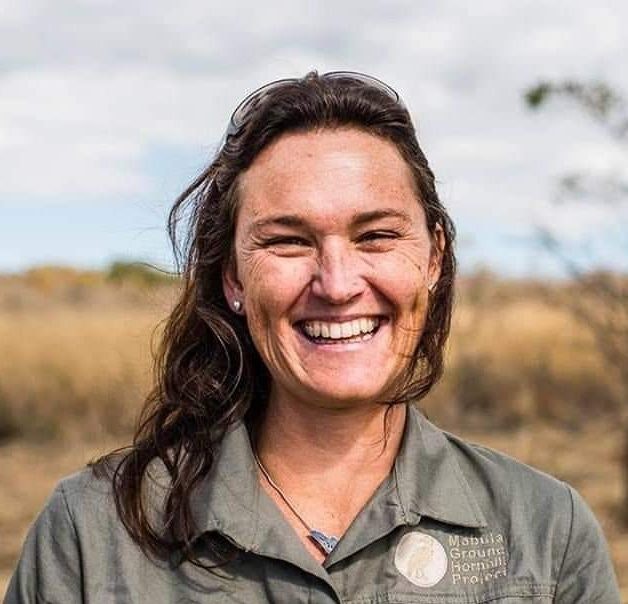South African culture is steeped in stories of the Southern Ground-hornbill, but numbers are declining as human threats mount. Lucy will align traditional beliefs with new conservation action.
AFRICA’S THUNDERBIRD
The Southern Ground-hornbill is a long-lived and large- bodied bird, valued culturally as the “bringer of rain”. Now Endangered in southern Africa, they have disappeared from 70% of their historical range. Cultural protection has kept some populations safe, however downward trends continue – mostly on commercial farmland and communal grazing areas where western influence trumps traditional beliefs.
LOCATION, LOCATION, LOCATION
Nest availability is a major factor in breeding success. The Southern Ground-hornbill is a territorial creature that needs its own space. If ideal nest sites are scarce, it will choose a sub-optimal site rather than leave its territory, which increases vulnerability to predation or flooding and limits chick survival. Lucy and her colleagues at the Mabula Ground Hornbill Project seek to halt the species’ decline and build local pride.
COMMUNITY CUSTODIANSHIP
Lucy will install artificial nests to improve breeding chances, considering nest height, hollow size, and cavity wall thickness to create the optimal micro-climate. She will engage landowners in a custodianship programme and provide training to monitor and protect hornbill nests. Lucy and her team will also document traditional beliefs, aligning cultural values with associated conservation measures. This will be incorporated into national conservation plans, strengthening capacity to preserve this great bird.
Lucy and her team will:
- Implement local Southern Ground-hornbill custodianship to increase survival outside of protected areas in South Africa.
- Install 40 artificial nests in priority areas to bolster breeding success.
- Document cultural beliefs and incorporate indigenous knowledge into conservation activities.
- Produce national conservation plans as a roadmap to recovery in Namibia and Botswana, where the species is most threatened beyond South Africa.
Top Facts:
- This snake-killing bird is the largest species of hornbill on earth, weighing up to 9lbs (about the size of a turkey).
- South Africa’s average Southern Ground-hornbill occupies a territory of 100km2.
- It has a reputation for breaking windows because it attacks its own reflection!
“They say it takes a village to raise a child. It is certainly going to take a village to protect this species.” Lucy Kemp
Image credits: Ben Jobson – BirdLife International (Southern Ground-hornbill), Hein Nel (group of Southern Ground-hornbills), Nthabiseng Monama (school children), Beautiful News (Lucy Kemp).






